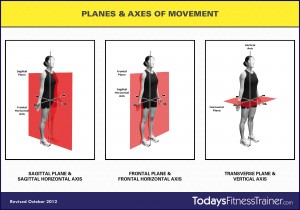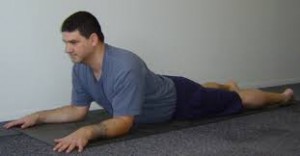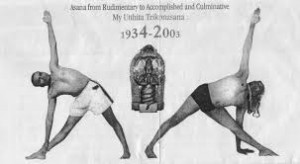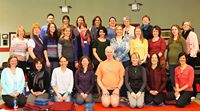1. Practice heart centering meditation, or variation there-of, every day. Keep working to stabilize the heart center as home base. Begin by palpating sternum/skin/fluids to find physical heart. Trace sensation inward to the space around the heart.
2. Practice the Dan Siegel ‘Wheel of Awareness’ meditation. In this meditation exploration, we use the wheel as a visual metaphor of the mind. Around the rim of the wheel are located the various information streams that feed the brain.  These include the five outer senses: sight, hearing, taste, smell and touch: the inner senses of kinesthesia which feeds information from the muscles, bones and joints about location and movement: and proprioception, where we feel the motility or inner movements from the organs and fluids, driven by breathing, the heart beat, peristalsis and the cranio-sacral rhythms: our emotional energies percolating up from the cells and organs; and the cognitive (word based) energies including the ‘monkey mind’. These sources stream to the hub along the ‘spokes’ and we use the hub to locate ‘awareness’. (Warning! All metaphors are limited. Useful but limited. Awareness is not confined by space or time.)
These include the five outer senses: sight, hearing, taste, smell and touch: the inner senses of kinesthesia which feeds information from the muscles, bones and joints about location and movement: and proprioception, where we feel the motility or inner movements from the organs and fluids, driven by breathing, the heart beat, peristalsis and the cranio-sacral rhythms: our emotional energies percolating up from the cells and organs; and the cognitive (word based) energies including the ‘monkey mind’. These sources stream to the hub along the ‘spokes’ and we use the hub to locate ‘awareness’. (Warning! All metaphors are limited. Useful but limited. Awareness is not confined by space or time.)
From the ‘hub’ of awareness, we direct our attention out the various ‘spokes’ to observe what is arising. We may notice the the process of ‘attention’ has a mind of its own and may jump from one spoke to another. Our discipline, (abhyasa), is to help stabilize attention, by bringing it to a specific spoke (dharana), keeping it there with some mindful effort (dhyana), and eventually having this become effortless (samadhi). Also we can cultivate a flexible attention that we can use efficiently as we take in the world without being ‘distracted’ by random sensations or thoughts.
In the ‘wheel of awareness’, we go back and forth, from the ‘hub of awareness’ to the various modalities out on the rim. What is most helpful is to really rest in the hub in between trips to the rim. Here awareness rest in itself. Awareness, not needing any information/objects of attention to sustain it, is still, open, unbounded by space and time. Patanjali call this drashtuh svarupe’ the seer resting it its own inherent nature, and uses this to describe the result of yoga. (PYS, I-3). Eckhart Tolle use the term ‘Now’. Atman, Brahman, Presence, Primordial Being are some other ‘pointing’ words. You can also use your open heart as the silent center.
By resting in awareness, we learn to not be so reactive to what arises, so we begin to tease apart the many layers of reactivity that comprise the ‘vrttis’ Patanjali describes in the Samadhi Pada. We see the ephemeral nature of thoughts, beliefs, ideas, sensations and slowly disentangle our ‘self-sense’ from this transient world.
In a somatic based practice like hatha yoga, the information streams coming from the body/mind are cultivated, studied and refined. We learn to feel our way through the body and allow the wisdom of the body to reveal itself moment to moment. Most yoga students begin with the mind telling the body what to do because they have never been taught how to feel, how to listen to the body. As teachers we need to help the students develop the confidence to trust what they feel and to not be afraid of sensations that are less than pleasant. Those sensations are our teachers.
3. Recognize and actualize the three levels of practice, related to the three bodies (gross, subtle and causal), as structure, energy/sound and light/cosmic fields.
4. In asana, awaken structure through the energy lines and circles. Structure involves the physical mass of the body, in movement and stillness. The study of anatomy and kinesiology, the physics of leverage, and anatomical alignment will help awaken this level of practice as you explore the moving energy in various yoga postures and sequences. Remember coiling and uncoiling. In embryology, the circle transforms into a tube, which then coils in on itself. To open the body, we must uncoil from the inside, flexion releasing into extension and then be able to return, extension releasing into flexion. This true for organs, spine and limbs.
Cultivating the energy lines and fields is as easy as 1-2-3. ONE heart / one mind. From your heart, as center, find the sphere of energy that always surrounds and supports you. It can pulsate, radiate or feel relatively stable. Then, find your core line or central axis of the body radiating in TWO opposite directions, feeling it extending through crown and root chakras, connecting all chakras, into heaven and earth. Use the inner heels to awaken tail lines. (see ardha chandrasana below) Maintain the sphere and core line dynamically throughout all of the poses and life embodying the THREE spacial dimensions. These can now become three axes of movement around the hip joints, and our postures can be seen to be organized around these. Master the simple movements as the core practice.
5. The first and most basic is saggital flexion and extension, or, in yoga terminology, forward bending and back bending. This is the fundamental movement pattern of mammals, from cats and dogs to whales and dolphins. Healthy action here requires clear and free movement of the pelvic bones over the femur heads and a long free imaginary tail to balance the spinal column.  (See dogs below if an image is needed.) When there is compromised movement through the hip joints, the lower back and knees (as well as everywhere else!) will suffer the consequences. The human body, starting in tadasana, has far more flexion available than extension. The best leverage to explore forward bending is from standing because, unlike in sitting, the pelvis can move through space.
(See dogs below if an image is needed.) When there is compromised movement through the hip joints, the lower back and knees (as well as everywhere else!) will suffer the consequences. The human body, starting in tadasana, has far more flexion available than extension. The best leverage to explore forward bending is from standing because, unlike in sitting, the pelvis can move through space.
In a simple forward bend like uttanasana, stay grounding through the legs and grow your self a tail. Bird tail, cat tail, dinosaur tail, anyone will do. Make it as long as possible. The root chakra has three limbs that can and need to be activated in energy flow; right and left legs and the tail. In tadasana, the three root limbs all elongate downward, but to begin uttasana, or any other forward bending pose, the tail energy initiates the action by moving in a circle, back along the floor and then reaching into space. This allows the pelvis to move freely without contracting any spinal muscles or collapsing the organ tree at the front of the body. With your long ‘imaginary tail’, your sacrum is now the center or fulcrum of the movement and thus can let go of any unnecessary holding. Returning to tadasana reverses the action. Practice moving slowly in and out to get a feel of the three energies, keeping them flowing. “Trifurcating the mula” is a key energy awakening that we can learn here. Later we will learn how to engage the inner heels to help activate and reinforce the tail energy.
In backbending,we can use the supine positions like sphinx  where gravity helps release the anterior lumbar. Activate the tail by pushing your hips back and up over your feet, like a mini dog pose, keeping the knees on the floor.
where gravity helps release the anterior lumbar. Activate the tail by pushing your hips back and up over your feet, like a mini dog pose, keeping the knees on the floor.
Leave the tail long and return back to sphinx by lengthening in an arc through the crown. Difficulty can be added by bringing the arms to cobra or up dog, or by taking the shins up the wall.
The famous Barcelonan architect, Antoni Gaudi, studied the math and physics of arches by hanging cables and strings and observing how gravity gives shape to the curves. Same in backbends. Once we feel how gravity opens and lengthens the spine in poses like the sphinx and dhanurasana, then, when we do reverse backbends like urdhva dhanurasana , (or triang mukkhottanasana), we have a sense of when there is space and when we are compressing the spine. Notice the use of vectors and leg energy in eka pada
, (or triang mukkhottanasana), we have a sense of when there is space and when we are compressing the spine. Notice the use of vectors and leg energy in eka pada  viparita dandasana. In both poses, notice the exceptional evenness of the curve on the front body. This is how to read backbends.
viparita dandasana. In both poses, notice the exceptional evenness of the curve on the front body. This is how to read backbends.
The second pattern of movement is lateral flexion and extension or fish body, where you rotate in the frontal plane. Fish, reptiles and amphibians move with this action and it is mostly spinal. As there is far less movement available here for the hip joints than the other two planes, yogis adjust the feet to create trikonasana, parsvakonasana, ardha chandrasana  and other side bending poses, and use this unique leverage to more deeply open the hip joints. Because lateral flexion is also available in the spinal column, and we do want to encourage freedom here, it is important to differentiate lateral freedom versus lateral collapse. In the trikonasana series, when the hips reach their limit of movement, do not just cave in sideways with the spine. Notice Iyengar’s before and after (69 years!) trikonasanas.
and other side bending poses, and use this unique leverage to more deeply open the hip joints. Because lateral flexion is also available in the spinal column, and we do want to encourage freedom here, it is important to differentiate lateral freedom versus lateral collapse. In the trikonasana series, when the hips reach their limit of movement, do not just cave in sideways with the spine. Notice Iyengar’s before and after (69 years!) trikonasanas.
If you use the wall for support, a beginning student can learn a lot about free movement in the hips by slowly moving in and out of ardha chandrasana,  keeping the standing leg grounding in slight flexion and the extension through the inner back heel. Slow movements establish a sattvic energy flow and prevent “holding on” rajasic, or “hanging out” tamasic energies. Eventually, staying in the pose comes from open flow throughout the body, extending in all directions. Also, here, and in one legged dog, we can feel how the inner back heel is intimately connected to the tail energy. When we come back to trikonasana, we can use an extending energy through the inner back heel to be the major mover of the energy, like a skier using their edges going around a slalom gate.
keeping the standing leg grounding in slight flexion and the extension through the inner back heel. Slow movements establish a sattvic energy flow and prevent “holding on” rajasic, or “hanging out” tamasic energies. Eventually, staying in the pose comes from open flow throughout the body, extending in all directions. Also, here, and in one legged dog, we can feel how the inner back heel is intimately connected to the tail energy. When we come back to trikonasana, we can use an extending energy through the inner back heel to be the major mover of the energy, like a skier using their edges going around a slalom gate.
The final pelvic action is rotation around the transverse plane and vertical axis of the body, known as twisting. How we place and use the feet has a huge effect upon the capacity to actually mobilize rotation in the hips. Revolved ardha chandrasana is the best at zeroing in on rotation because you can do each hip independently. Also, if you see the lines of energy in Venus (on her backhand) and Rafa (on his forehand) as they extend in opposite directions through space, back leg balancing front arm, and orient beyond their bodies, you can have a feel for the dynamism and aliveness possible in the pose. If we choose to ‘stay’ in a posture for many breaths, there should be this quality dynamism along with an ease in moving in and out along the spinal axis, from head to tail (or hands to feet).
If we choose to ‘stay’ in a posture for many breaths, there should be this quality dynamism along with an ease in moving in and out along the spinal axis, from head to tail (or hands to feet).
6. Once we have a feel for the three planes, trifurcating the mula (adding a tail to the legs) and opposite action, we can take this awareness into ‘one legged dog pose’ and onto hand stand and head stand. Keep extending through the inner heels and tail as the rooting energy is now creating lift. This is the foundation for the safe practice of all inversions.
and onto hand stand and head stand. Keep extending through the inner heels and tail as the rooting energy is now creating lift. This is the foundation for the safe practice of all inversions.
To learn a safe way to sarvangasana, begin with viparita karani and supported bridge pose to create opening to the organs and throat.  Too many students block the throat chakra thinking they are doing jalandhara bandha.
Too many students block the throat chakra thinking they are doing jalandhara bandha.
5. The subtle body is energy, aka prana, chi, qi, or ki. Fundamentally it is sound, vibration, as all life is music. As beginners, we explore the breathing process and simple movements, where there is an oscillation between two poles (moving in and out of a pose) and a middle or fulcrum that is ever still. In time we begin to experience a deeper sense of the motility of the body, that is, all of the movements of physiology and especially the four major rhythms. Respiration is first and is felt in the tissues throughout the body, not just in the belly or chest. The heartbeat and the circulatory pulsation is the second, peristalsis and the rhythmic undulations of the gut body from mouth to anus is third. Finallly the cranio-sacral movements will bring us into our embryological origins and primal movements of our aliveness.
In addition to exploring the breathing movements, beginning students can also play with sound. Vowel sounds send patterns of energy through the body, fluids and structures, and can give us feedback on where we are holding tension. Being able to feel and create sounds is very therapeutic for all. Then mantras, chanting and bhajans or sacred songs can be explored, for the sheer joy of chanting, but also as a way to feel more deeply into the realm and intelligence of sound.
Emilie Conrad’s ‘Hu Breath, which we played with Sunday, combines the respiratory and peristaltic rhythms with sound to mobilize the fluid body, dissolve patterns of tension, and awaken the inner realms of aliveness. Like a dog panting, or laughing/crying, a rhythm is generated and then explored by micro changes in face, diaphragm, ribs, and anywhere that is free to move.
 And always return to the center of the heart and the ever present stillness. Rest there, and remember stillness is not the absence of movement, but your natural state independent of all that is going on within you and without you.
And always return to the center of the heart and the ever present stillness. Rest there, and remember stillness is not the absence of movement, but your natural state independent of all that is going on within you and without you.


